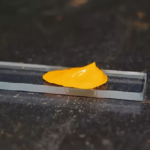To answer a popular question about how to choose a drill, you need to take into account many nuances. Why and how often the tool will be used, whether it should have a function of impact and work in a screwdriver mode is a far from a complete list of what you need to focus on when buying this indispensable assistant to any master.
Which drill to choose and how not to get confused in the sea of tools?
The video tells – how to choose an electric drill for the house
So, how to choose a good drill right? First of all, you need to determine for which purpose you are acquiring a tool. If you work exclusively with wood and metal, then you need to purchase a conventional drill without all kinds of “bells and whistles” that does not have the function of impact. Your plans include drilling not only these materials, but also occasionally concrete or brick? Then you will certainly need a drill with a function of a blow (do not confuse it with a punch).
A screwdriver is needed to assemble furniture. Often on sale you can find a drill that has such a function as an additional option. However, if there will be the same number of “drilling” and “assembly” works, experienced craftsmen recommend that you acquire two tools – a “clean” drill and a “clean” screwdriver.
It is necessary to take into account the frequency of work. If your tool will work almost every day for several hours in a row, then you should think about buying a professional drill. However, if most of the time the tool is peacefully lying in its suitcase, there is no need to buy an expensive professional device. The usual household drill costs much cheaper.
Now let’s talk about which company to choose a drill. In this case, everything is quite simple: your choice should be stopped on a tool released by a well -known manufacturer. Of course, the choice of the conditional brand “No Name” may seem attractive, because its cost compared to the same tool of Bosch or Hilti is noticeably lower. In fact, the savings turn out to be false, since the drill collected, as they say, on the knee, will serve very, very shortly. However, if you use the tool quite rarely, you can opt for a less expensive, but no less well -known brand, for example, an Inescol or Makita.
What is important to know when choosing a drill?
Video review of how to choose a power tool
You stand in the store, hold an electric drill in your hands – how to choose it, by what characteristics? When purchasing a “clean” electric drill, pay attention to several parameters:
Power;
maximum drilling diameter;
rotational speed.
The capacity of most drifts on sale ranges from 300 to 1500 watts. The smaller this indicator, the more efforts will have to be made during drilling. Without going into details, let’s say that for home use, a drill with 800-voltage power will be quite enough.
The maximum permissible drilling diameter is indicated so that the drill does not become unusable after the first use. In other words, if, for example, the limit is set by 40 mm, and you will try to drill a hole twice as much, the tool will most likely die quickly enough.
Rotation speed is a characteristic on which the tool performance depends (measured at idle). Simply put, the larger this indicator, the faster the necessary work will be done. Particular attention should be paid to it if, in addition to the “drilling” work, the drill will perform, for example, the function of the grinder.
The convenience of working with it largely depends on which cartridge is installed on the drill. As practice shows, the optimal choice will be a tool equipped with a fast -packed one -button cartridge.
When buying, pay attention to the presence of such a useful option as blocking inclusion, which will protect the tool from random start.
Shock drill – how to choose a tool with an additional function?
If not very frequent drilling of concrete (but not reinforced concrete is included in the list of tasks of your tool!) and bricks, you should think about buying a tool with a blow function. It is very important to remember that the principles of the work of the drill and the perforator are very different. Therefore, the constant use of the first to work with an artificial stone (as well as the use of a more serious tool for drilling metal or wood) will certainly lead to its ambulance.
So, we have a question: a drill with a perforator – how to choose a tool based on the required characteristics. It is no secret that the function of the blow of such a tool, unlike a punch, is secondary. However, so that it is executed as it should, look in the passport of the tool power. It should be at least 800-1000 watts. By the way, the perforators have power indicators below – for example, in order to do the same work as a drill with a blow, it will need no more than 450 watts.
When buying such a drill, pay attention to the function of reversal (that is, the possibility of reverse rotation) and the possibility of regulating the speed of rotation. In addition, if you buy a drill with high power, choose a tool with a safety coupling. This “gadget” will help to hold the drill in the hands if the drill is jammed.
How to make the right choice of a battery drill?
Now let’s talk about how to choose a battery drill. First of all, let’s dwell on the types of batteries that can be: lithium-ion (Li-Ion), nickel-cadmium (Nicd) and nickel-magnesium (NIMG). The first of them, installed on most modern “autonomous” drifts, have the lowest weight and a long period of work compared to the other two.
Nickel-cadmium differs from nickel-magnesium opportunity to work in frost conditions. However, the magnesium battery has a lower weight with the same capacity, and the memory effect is smaller. That is, for example, if you charge a not completely discharged nickel-cadmium battery, then during subsequent work it will stop working at the level of the charge at which it was connected to the nutrition element before that. Ultimately, such a battery will have a shorter service life.
Also pay attention to the capacity of the power battery. The larger it is, the longer your tool will work without recharging. The largest capacity is possessed by the batteries of professional tools, while amateur this indicator is small. The battery charging time of the “Profi” category is about one hour, while the battery of the “home” tool is charged until seven o’clock.





